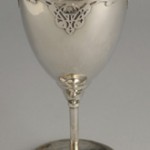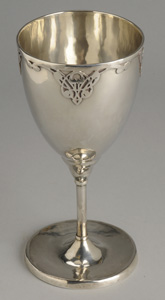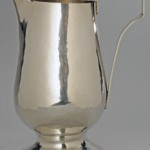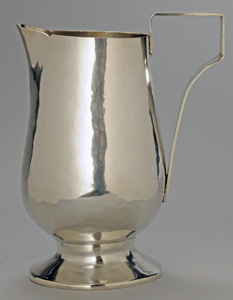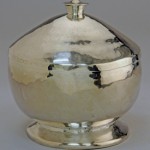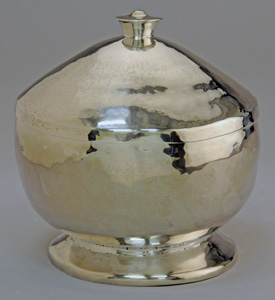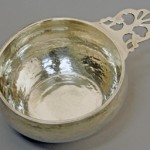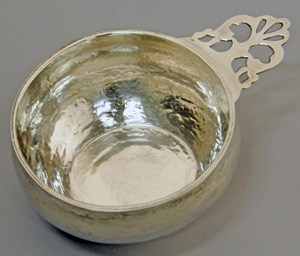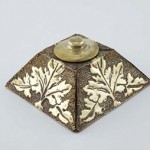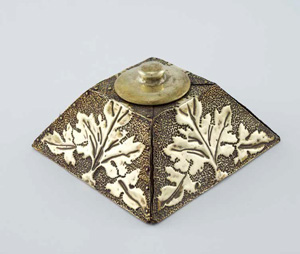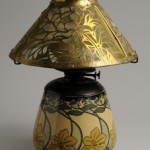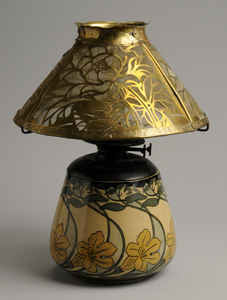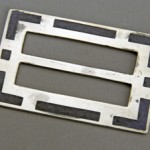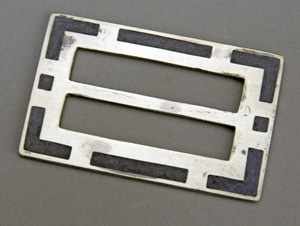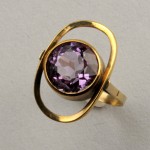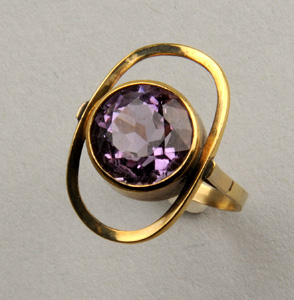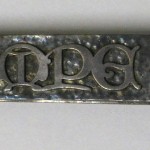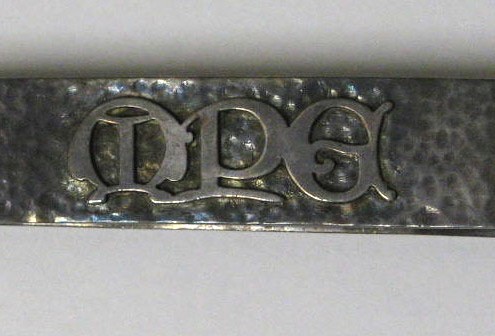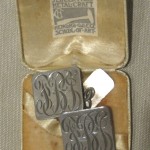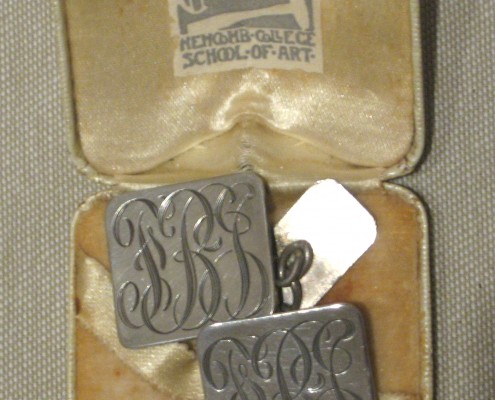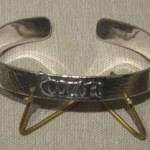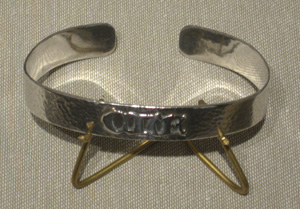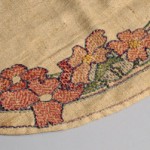Newcomb Metalwork
In late 1901, two new crafts—embroidery and metalworks—were introduced to the Newcomb curriculum. Under the guidance of Mary Sheerer, the first experiments started with perforating brass sheet metal to make shades for Newcomb ceramic lamp bases. Metalwork was given increased attention in the 1908-09 school year when Mary Williams Butler introduced jewelry-making to the curriculum. Students learned to work in copper and silver; stone-setting was also taught.
At the time, palms, pines and Southern flora dominated the crafts decoration. Some students supplemented family incomes by making jewelry, religious objects, and table services. By 1918, the metalwork and jewelry venture reports recorded sales items such as bracelets, napkin rings, tie pins, cuff links, rings, mailboxes, doorbell plates, pitchers, chalices, and bowls. Total sales for metalwork in one year was more than $2,000. Mary Williams Butler remained at Newcomb until 1937 and her classes were among the first in the art department to enroll men, predominantly from the School of Architecture.

